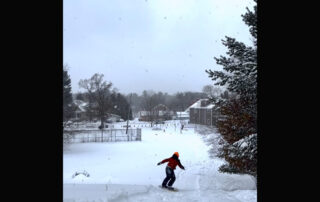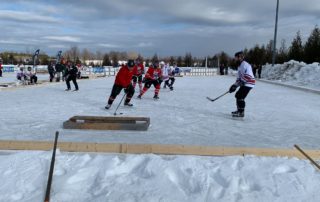Our lakes are worlds unto themselves, but when one becomes covered with a roof of ice nearly two feet thick, it takes on an isolation and beauty that few are brave enough to ever see firsthand.
WPR’s Aubrey Ralph followed a group of local divers with Diversions Scuba as they went ice diving off Picnic Point on Madison’s Lake Mendota.
==
There is a little Arctic camp with a red and white flag and warming shelters and piles of ice blocks. It looks like a National Geographic special.
The first order of business, conducted by Diversions Scuba owner and instructor Tami Thomsen, is cutting a dive hole, which is shaped like a triangle.
“The edges are narrow enough so that a diver can put their hands on either side and then hop out,” Thomsen said. “If they can’t get out for some reason, they can back into the corner and then someone on the surface can grab their tank and pull them out.”
Just looking at that water is enough to take your breath away – it’s so cold and dark. But that’s also what makes it so amazing.
The main focus of today’s dive is an old underwater research lab called the “Habitat,” a project at the University of Wisconsin-Madison that was abandoned some 20 years ago.
“Hey, there it is! … It kind of looks like a lunar lander module,” Thomsen said. She and fellow instructor Matt Schultz were able to take audio recorders with them while under the water, where there was a fixed camera set up.
“There’s the structure that (the camera is) sitting on,” Schultz said. “So you see, like, that’s a big rusty pipe. Here you can see the cylinders. People used to be able to go up inside and they’d spend a day there doing research.
“And what’s really neat about this habitat is the numbers of fish that you see at the base of the module. (You have) about 100 to 200 sunfish, crappies, couple of bass,” Schultz added.
In all, they spent about 20 minutes under and visited a lot of neat things, including a Model T Ford.
“I’m looking up and we’re getting a lot of ambient light through the ice. It’ really pretty. … You can really see how flat it is and all the bubbles working their way along the surface. You can see a triangular hole and just see everybody working around the hole,” Thomsen said.
After Thomsen and Schultz got out, the class began and there were three or four more dives. Then it was time to pack up and head home, which included pushing the blocks back into the hole and marking it off.
It’s like a big triangular glass of ice water. Who knows what grand adventures lie in that cold world under the ice.














